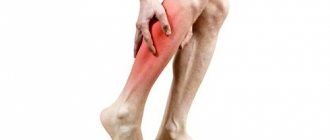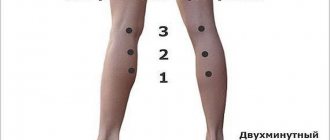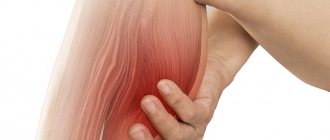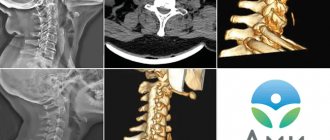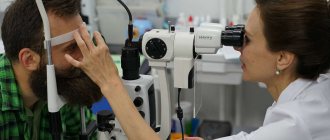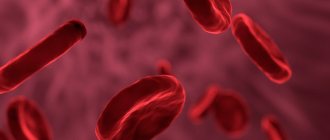January 17, 2021
Cramps are uncontrollable contractions of the leg muscles that appear unexpectedly. As a rule, they appear in the evenings before going to bed or in the morning after waking up. Based on the duration of the manifestations, there are short ones, lasting a few seconds, and long ones, the duration of which can be up to 15 minutes. If they are single in nature, they do not cause serious problems. However, they lead to discomfort, disruption of rest and muscle function. With repeated repetitions and the appearance of pain, they serve as a separate symptom indicating a number of diseases.
From this article you will learn the reasons why your calves cramp in the morning, what first aid should be given for cramps, treatment and prevention.
Causes of seizures
Morning cramps that do not require medical intervention include involuntary contractions that occur when:
- keeping the body and legs in an uncomfortable position for a long time;
- wearing ill-fitting, uncomfortable shoes;
- lack of water in the body, and vice versa, excess fluid;
- lack of vitamins and microelements in the body;
- lack of physical activity, and vice versa, excess of it;
- being in all sorts of stressful situations;
- excessive alcohol consumption, smoking.
If the pain is recurring and manifests itself, it is necessary to consult a doctor, since muscle spasms may indicate a number of diseases, such as:
- varicose veins, other manifestations of venous pathologies, such as atherosclerosis, venous insufficiency;
- disruption of the heart;
- thyroid disease or deficiency;
- kidney pathologies;
- infectious diseases;
- excess body weight.
In this case, after a series of consultations and examinations of the body, treatment appropriate to the diagnosis is prescribed.
Diagnostics and therapy
What to do if a leg cramp starts ? After you have carried out manipulations to eliminate the cramp, you need to think: what is causing this? If this happens to you frequently, you should consult a therapist. He will prescribe a list of tests:
- A clinical blood test that allows you to see any inflammatory changes, a decrease in the number of red blood cells, and gain a complete understanding of your problem.
- Blood sugar test to rule out diabetes.
- Urine examination - to determine a malfunction of the kidneys - the organ that controls the water and electrolyte balance of the body.
- Ultrasound of veins - to evaluate hematopoiesis and determine whether there is venous insufficiency.
Most likely, based on these data and after the examination, some more examinations will need to be done, but only the therapist will decide this. Based on a complete study, he will refer you to a highly specialized doctor who will prescribe complete treatment.
First aid for leg cramps
If your calves cramp in the morning and you need help, you can resort to the following actions:
- You need to pull the toe up towards your head. In this case, the muscles are stretched, not allowing contraction;
- If the spasms do not calm down, there is a need to get a massage. It is important to carry out carefully, without applying too much pressure;
- Bring the body position to a position in which the limb being abducted is above the head. This is necessary to reduce blood flow and muscle activity;
- Get out of bed and walk around;
- Take a warm compress. A dampened towel works great;
- Take a warm bath to relax your muscles.
How to stop night cramps
When a patient wakes up from severe pain, the first thing he does is try to rub the sore spot. Unfortunately, this method does not always work. Phlebologists recommend doing the following:
1. While lying down and feeling pain in the calf muscle, pull your foot towards you and stretch the muscle. After you have managed to relieve the cramps, work out both lower limbs, alternately pulling them towards you. This way you will resume blood circulation in the vessels.
2. The easiest way is to use a pin or needle. Inject yourself where the muscle is compressed. If you don’t have anything prickly on hand, you can simply pinch your leg in the shin.
3. Try to stand on the bare, cool floor and walk around. When you feel your muscles relax, stand on the floor for a couple more minutes, shifting from foot to foot. This simple exercise quickly awakens the blood and improves blood circulation.
Treatment
Depending on the diagnosis and further treatment, the attending physician prescribes medications. Some make up for the lack of vitamins and microelements - they influence the cause of the disease, others relieve spasms and improve well-being - symptomatic therapy is carried out. They are used together, complementing each other.
The most popular medications for treating calf muscle cramps are:
- Tablets containing microelements - Asparkam, Panangin, Magnerot, Magnelis B6.
- Vitamins - popular are Complivit, Alphabet, Calcium D3
- Ointments - Venuron, Venarum, Heparin ointment, Diclofenac. They affect the veins, improve blood circulation in the legs and relieve pain.
In addition to medications, physiotherapeutic methods are used, such as electrophoresis, magnetic therapy, laser therapy, ion therapy and others.
How to recognize a seizure in a child
Often, muscle spasms appear in children, even the youngest. They may appear as a minor nervous tic or twitch, such as during sleep, if the brain sends impulses to the nerve endings as a result of its normal activity.
In newborns, a convulsive attack occurs due to disturbances in labor in the mother, with a lack of oxygen and asphyxia, as a result of injuries received during childbirth, due to diabetes mellitus in the woman in labor.
Children aged one or two years suffer from the appearance of seizures, which are caused by disorders of the development of the nervous system, internal organs, against the background of infectious lesions, vaccinations or colds.
In older children, risk factors include head injuries, the risk of poisoning, hysterical fits and neuroses.
How can you tell if your child is having seizures? The baby begins to move his limbs suddenly and involuntarily - this may look like a tic, twitching, or jerking. Facial features are distorted, and a pulsation is felt in the muscle at the site of the spasm. The child rolls his eyes, clenches his jaw, tenses his limbs, and may squeeze or stretch them. Lips and skin acquire a bluish tint. Involuntary urination may occur. In severe cases, a seizure is accompanied by vomiting or foaming at the mouth.
Prevention
In order to avoid night and morning cramps in the legs, it is important to remember to follow preventive measures to prevent the occurrence of cramps. They include:
- Maintaining a daily routine. The body needs proper rest and sleep at strictly defined hours;
- A healthy diet, food should include calcium - milk, cottage cheese, cheese, almonds; magnesium - buckwheat porridge, walnuts, legumes; potassium - dried apricots, raisins, beets, sunflower seeds
- As directed by the doctor, follow a diet, abstain from spicy, fatty, excessively sweet and salty dishes and foods;
- Periodic calf massage will improve blood circulation in the legs and relax the muscles;
- Wearing comfortable shoes will allow you to get an even load on the foot, helping to relieve and prevent tension in the muscles.
Prevention of night cramps
To limit yourself from experiencing night cramps, our phlebologists recommend:
- add vitamins such as calcium and magnesium to your menu;
- consume dairy products;
- eliminate smoking;
- choose the right shoes - provide low heels;
- avoid excessive stress on the lower limbs;
- Consume caffeine and strong tea in small quantities.
Contrast baths before bedtime have a positive effect as a preventive measure against cramps, helping to naturally strengthen the walls of the veins.
Diagnosis, treatment and prevention of seizures
You should eat enough foods containing magnesium.
If you have regular seizures that have been bothering you for a long time, do not put off visiting a doctor. First, you should visit a therapist (if seizures occur in a child, then a pediatrician), who will conduct an examination, prescribe the necessary examination and, if necessary, recommend consultations with specialists of a narrow profile - a neurologist, endocrinologist, cardiologist, nephrologist and others.
If the cause of seizures is any somatic pathology, then with adequate treatment, the problem of sudden muscle contractions will soon be resolved.
If the results of the examination show that there are no serious diseases that could provoke seizures, the doctor will give the patient recommendations, if followed, his condition will improve in the near future.
- Proper nutrition.
- It is necessary to divide the daily diet into 5-6 meals, and the portions should not be voluminous.
- The basis of the diet should be complex carbohydrates - cereals, durum wheat pasta, vegetables and fruits.
- Fats also take part in the mechanism of proper muscle contraction - a small piece of butter or fatty red fish will enrich the body with this essential nutrient.
- Don’t forget about foods rich in magnesium (nuts, legumes, carrots, greens, seaweed), potassium (bananas, dried apricots, melon, potatoes), calcium (milk and dairy products), B vitamins (dairy products, walnuts , red fish).
- A healthy lifestyle (adequate physical activity, avoiding heavy loads on the legs, quitting smoking).
- Sleep in a comfortable bed in a position with your legs slightly elevated above the axis of your torso and head.
- Taking relaxing foot baths with sea salt - dissolve 3 tablespoons of sea salt in 5 liters of water at room temperature.
- Massage your feet with warming ointment or cream before bed.
- Refusal of uncomfortable shoes, high heels (shoes should be comfortable for your feet, the height of a stable heel should not exceed 4-5 cm).
- If you have chronic venous insufficiency, wear compression stockings and tights (the degree of compression of these things can be different - to choose the right one, consult a phlebologist).
- Treatment of flat feet, including wearing orthopedic shoes and/or special insoles.
- Taking medications containing multivitamin and mineral complexes (calcium-D3-Nycomed, Magne-B6, asparkam).
Types of spasms
Experts distinguish several types of seizures, dividing them into categories according to two main characteristics: location, nature and duration. In the first category, the following types of muscle contractions are distinguished:
- Local. They occur on a separate (local) muscle area, for example, on the thigh muscle.
- One-sided. Fixed only on one side of the body (for example, on the right).
- Are common. In such situations, muscles throughout the body, both left and right, cramp, which can lead to problems with swallowing, breathing and other important activities.
The second category includes the following types:
- Tonic - long lasting convulsions that turn into a state of tension. They are painful, feeling as if some muscles are hardening. Most often this is felt in the calves and legs, less often - thighs and feet.
- Myoclonic contractions are short-term contractions that completely end after a few minutes and do not leave any unpleasant consequences.
- Clonic (nervous tic) - jerky, cyclically repeating and alternating with relaxation. Accompanied by fairly rapid movements, for example, of the eyelids. This happens due to short-term contractions of certain muscle groups.
- Tonic-clonic . Combine the simultaneous action of several described types of seizures.
- Generalized – the most dangerous type, is accompanied by muscle contraction throughout the body and often provokes loss of consciousness. The occurrence of such spasms indicates a serious illness and requires immediate medical attention.
What are cramps
Involuntary contractions of one or more muscle groups, accompanied by pain, are called cramps. The most common occurrence is leg cramps, or more precisely, cramps in the calf muscle (located on the back of the lower leg). For a certain reason, this muscle suddenly goes into spasm, which entails the maximum possible extension of the foot - the person seems to stand on tiptoe. As is clear from the definition, muscle spasm is accompanied by intense, often unbearable pain.
Causes of calf muscle cramps
There are five main factors that can lead to the development of calf muscle cramps.
Among them:
- Disturbances in the functioning of the brain.
- Excessive amount of acetylcholine in the synaptic cleft.
- Low ATP levels.
- Insufficient excitability of myocytes.
- Defects in contractile proteins that occur at the genetic level.
It would seem that all these terms are difficult for the average person to understand, but in fact they hide pathologies and disorders familiar to everyone. You just need to look at them in more detail.
Brain disorders
The cerebellum is responsible for maintaining the tone of the calf muscle. Even when a person is sleeping, this part of the brain continues to send impulses to it and other muscles, but not with the same intensity as during wakefulness.
Diseases that can lead to an increase in impulses sent by the cerebellum:
- Epilepsy.
- Psychosis in the acute phase.
- Eclampsia.
- Received traumatic brain injury.
- Hemorrhage into the cranial cavity.
- Thromboembolism of the brain.
Eclampsia develops only in pregnant women. This condition is dangerous for her life and the life of the child. Eclampsia does not occur quickly and with lightning speed, it makes itself felt gradually. First, the pregnant woman’s blood pressure rises, swelling forms in her legs, and her overall health begins to deteriorate. During the same period, she may develop cramps in the calf muscles. In the future, they will affect the uterus and can lead to placental abruption and serious health complications. Therefore, convulsions in pregnant women can be a rather ominous signal.
Excessive amounts of acetylcholine in the synaptic cleft
Acetylcholine takes part in the process of transmitting impulses from nerves to muscle cells. If there is too much of it in the synaptic cleft, it will cause the muscles to contract convulsively.
Reasons for increasing acetylcholine:
- Lack of magnesium in the body.
Magnesium is an essential electrolyte that is responsible for many functions in the body. Among other things, it regulates the opening of channels containing acetylcholine. If there is little magnesium, then these channels will be closed, which will provoke the development of cramps in the calf muscles.
The following reasons will lead to a lack of magnesium in the body:
- Adherence to diets, poor nutrition.
- Malabsorption syndrome, intestinal inflammation, intestinal resection. All these conditions lead to the fact that magnesium will be poorly absorbed in the body.
- Excessive intake of calcium from food, as well as consumption of fatty or protein foods, impedes the absorption of magnesium in the intestines.
- Sometimes conditions arise in which the body spends more magnesium than it receives. This occurs during times of stress, during intense sports training, during pregnancy and lactation, during periods of active growth of the body, during the recovery of the body after illnesses. Each of these conditions will contribute to the development of calf muscle cramps.
- Sometimes magnesium is excreted from the body in large quantities, for example, through vomiting, diarrhea, or taking laxatives. A lack of magnesium is observed in coffee and strong tea drinkers and alcoholics. In this regard, kidney disease, diabetes mellitus, taking sorbent drugs, and undergoing therapy for cancer pathologies are dangerous.
- Magnesium deficiency and leg cramps can often bother people with endocrine pathologies, such as hyperthyroidism, hyperparathyroidism, hyperaldosteronism.
- Overdose of drugs.
In this regard, it is dangerous to take drugs that block an enzyme called cholinesterase, which, in turn, destroys acetylcholine. If there is little cholinesterase, then acetylcholine will accumulate in the synaptic cleft and cause muscle contractions in the form of cramps. Such drugs include Axamon, Alzepil, Ipigrix, Nivalin, Exelon, etc.
As practice shows, it is the lack of magnesium that is the most common cause of calf muscle cramps in people of all ages. In addition to convulsive muscle contractions, they will be bothered by hearing impairment, migraine-type headaches, skin diseases and alopecia, back and abdominal pain, and bowel disorders.
In childhood, a lack of magnesium leads to heart disease, vascular spasms, deterioration of the immune system and other serious problems.
If this condition is not treated, then in addition to cramps in the calf muscles, the person will experience cramps in the hands, back, neck muscles, and facial muscles.
Insufficient excitability of myocytes
If the excitability of the muscle cells representing the calf muscle is insufficient, then the person will develop a cramp. Such disorders can be caused by an imbalance of electrolytes in the body and a deficiency of vitamins.
The main electrolytes of the human body are: sodium, potassium, calcium and magnesium. Various conditions can lead to imbalance: increased physical activity, oxygen starvation and physical inactivity, lack of water in the body due to various diseases or when eating too salty food without the opportunity to get drunk.
Excessive intake of water into the body is no less dangerous. This can also lead to fluid and electrolyte imbalance and the development of seizures.
Vitamin deficiency affects muscle contractility. Cramps in the calf muscles can occur in people who do not receive enough vitamin D, E, A, and B. Most often, the cause of such deficiency is dietary errors.
Low ATP level
The following diseases and conditions can lead to a decrease in the concentration of ATP, as the main carrier of energy in the human body, and therefore to the development of cramps in the calf muscles:
- Anemia, regardless of its origin, heart failure, vascular disease, lung disease, influenza, adenoiditis, altitude sickness. All these conditions have in common that they cause hypoxia of muscle tissue, which means they can cause seizures.
- Low blood sugar with developing hypoglycemia, as well as diabetes.
- Lack of B vitamins in the body (B1, B2, B5, B6).
- Magnesium deficiency.
- Taking diuretics.
- Hypothyroidism.
- Treatment with statins.
- Inferior vena cava syndrome.
- Varicose veins.
- Thrombophlebitis.
- Atherosclerotic vascular lesions.
- Hard physical labor.
- The rehabilitation period after surgery.
- Following a low-calorie diet.
You need to be prepared for the fact that the calf muscle will sooner or later cramp if a person works out in the gym. Therefore, during intense training, it will not be possible to do without taking vitamin and mineral complexes.
Genetic diseases
The calf muscles can cramp in people who suffer from genetic pathologies. These diseases remain incurable today, but they are not common. An example of such a pathology is Tourette's disease. In addition to seizures, a person experiences tics and involuntary screams.
Other causes of leg cramps
If a person is injured or has a broken bone, then muscle cramps act in this case as a protective mechanism. It is aimed at limiting the mobility of the injured area. On the other hand, it is muscle spasm, as a reaction to pain, that is the main cause of fracture of tubular bones when a person falls from a height.
The cause of cramps in the calf muscles can be osteochondrosis, a herniated disc, a perineural cyst, or a tumor that compresses the S1 and S2 vertebrae. After all, it is at the level of the sacral spine that the roots of the nerve plexuses are located, which go to the calf muscles.
Another cause of calf muscle cramps is transverse flatfoot and other foot abnormalities, which lead to a redistribution of the load on the calf muscle ligaments. It also affects the deterioration of blood flow, compression of nerve trunks and overstrain of joints.

